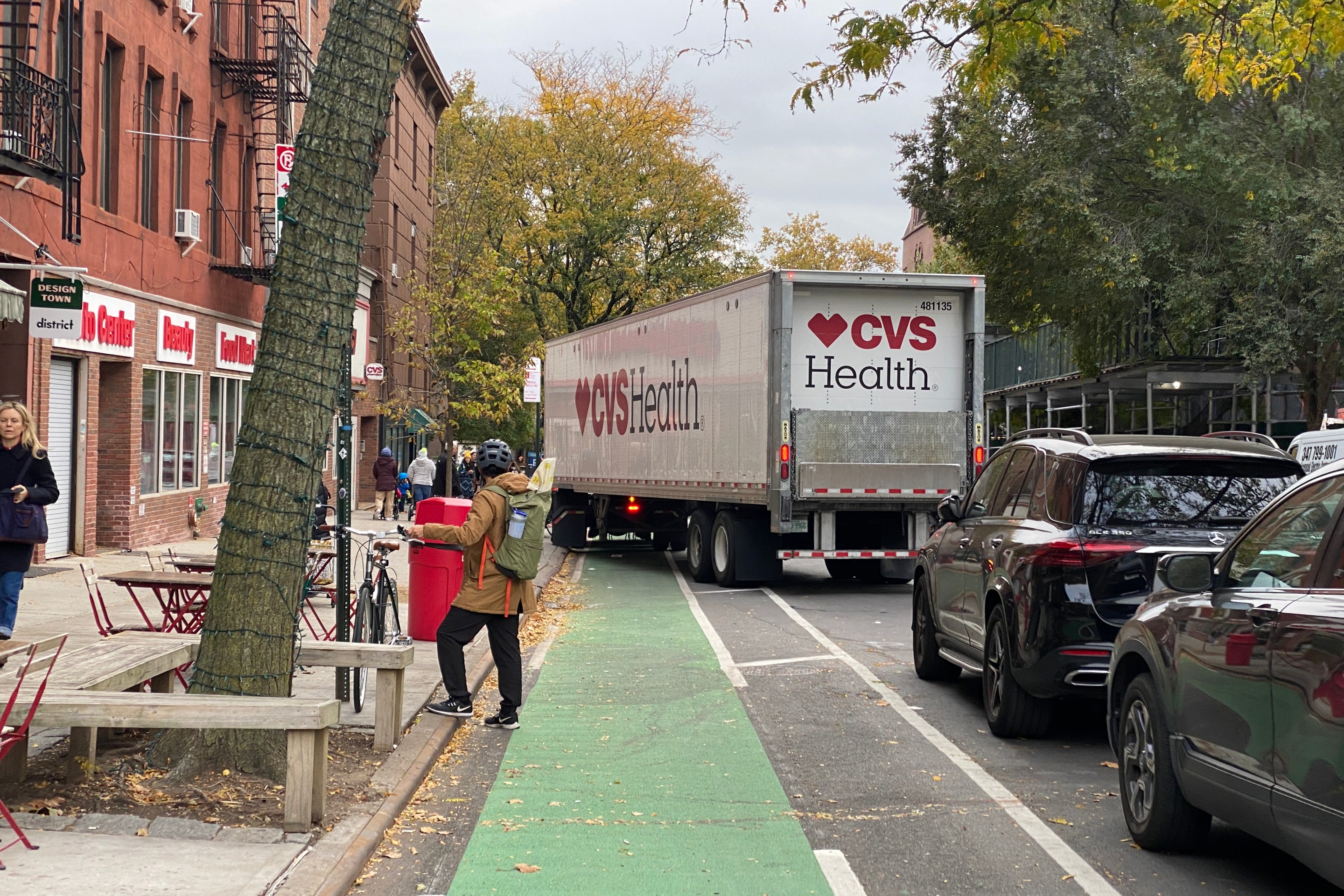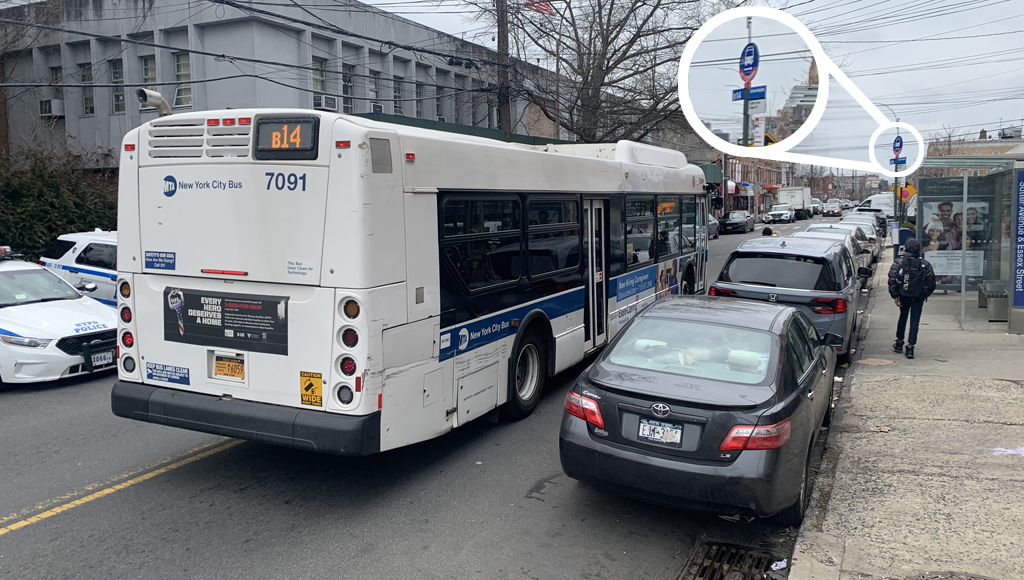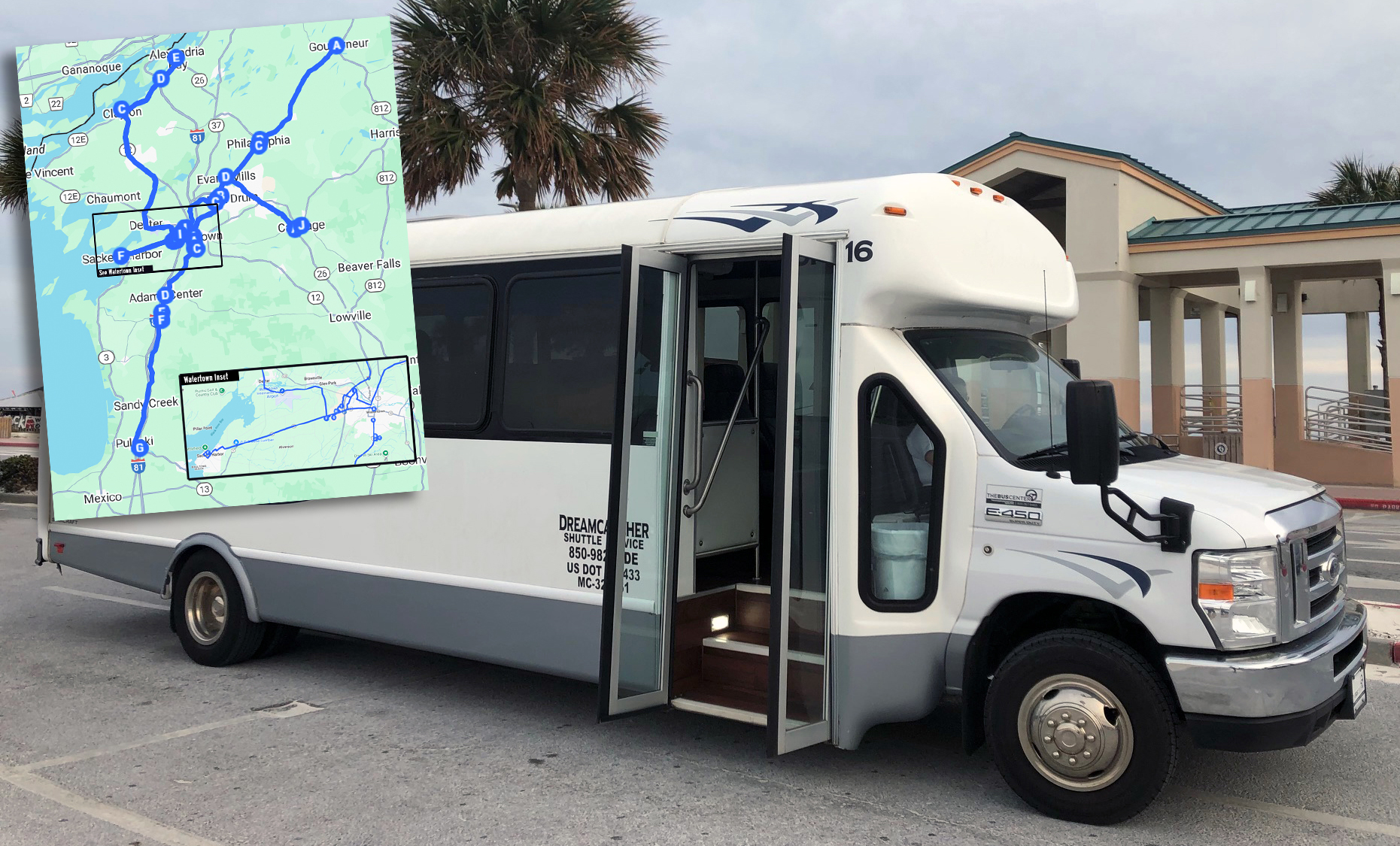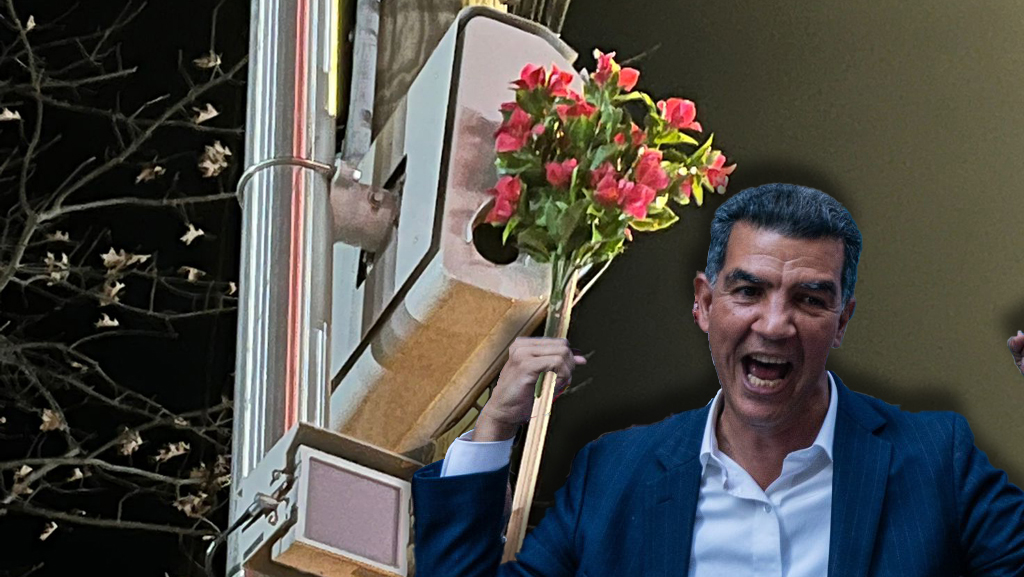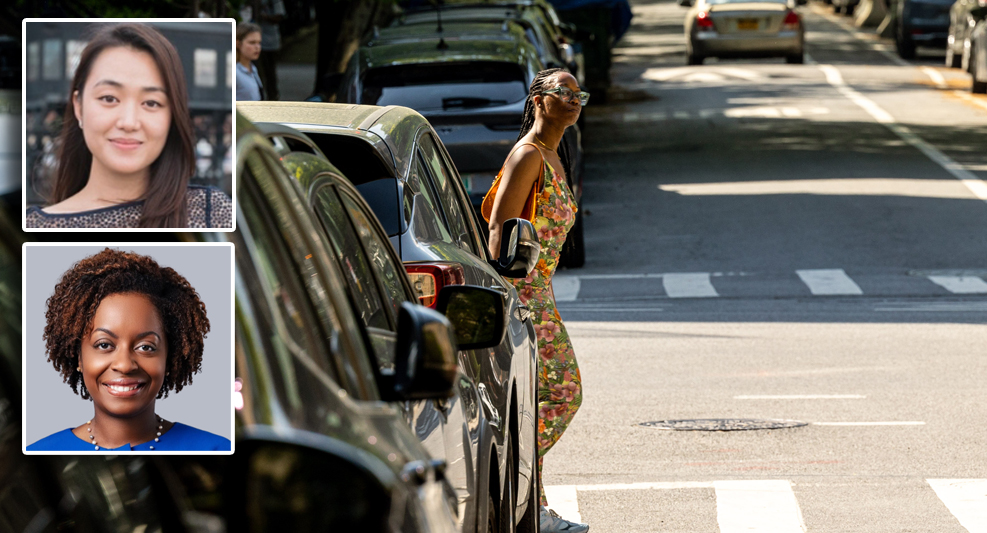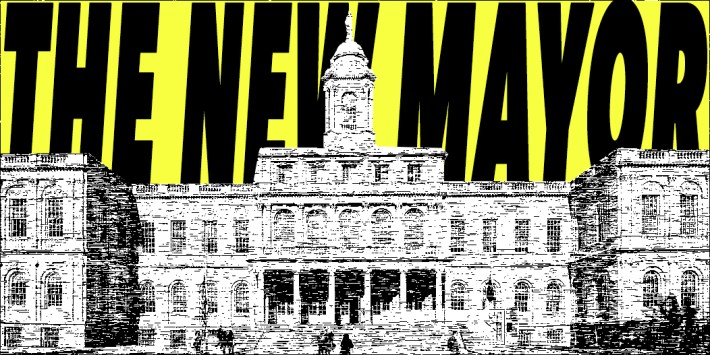
Fifth Avenue is one of the world’s most famous streets. Yet, for decades, it’s been choked by congestion – creating unsafe conditions for cyclists, overcrowding for pedestrians and sluggish commutes for bus riders. That’s why Mayor-elect Zohran Mamdani should revive the Department of Transportation plan to transform Fifth Avenue with wider sidewalks, a protected bike lane, and a dedicated busway, which Mayors de Blasio and Adams shelved at the behest of powerful business interests.
In 2021, DOT began work on its Fifth Avenue plan, removing the existing lane markings in preparation for the new design. The project’s advancement came after 10 years of public engagement and 13,000 petition signatures in favor of the design. It had the explicit support from the local Manhattan Community Boards and elected officials.
But that work came to an abrupt halt after then-Mayor Bill de Blasio met privately with “one of New York City’s most powerful real estate developers,” in the words of the New York Times. Last year, Mayor Adams announced a plan sanctioned by the local Business Improvement District, the Fifth Avenue Association, that added wider sidewalks but no bike lanes and, in a blow to bus riders, cut one of the two bus lanes. Over the summer, the local community board demanded the 2021 proposal be revived, considering the new plan isn't scheduled to be installed until 2028 — nearly a decade after DOT started, then stopped, work on its original plan.
We owe this slow-roll to mediocrity to the wealthy denizens of the Fifth Avenue Association, who stymied the 2021 plan and whose leadership presented Adams’s updated, car-first proposal alongside DOT this summer. Presenting the plan to Manhattan Community Board 5 in June, Fifth Avenue Association CEO Madelyn Wils took full ownership of the plan: “There’s just not enough room on every street for everything," she said. “It’s not like we didn’t try, we tried, we just couldn’t make it work.” The group’s members include Saks Fifth Avenue, the Trump Organization and Bergdorf Goodman.
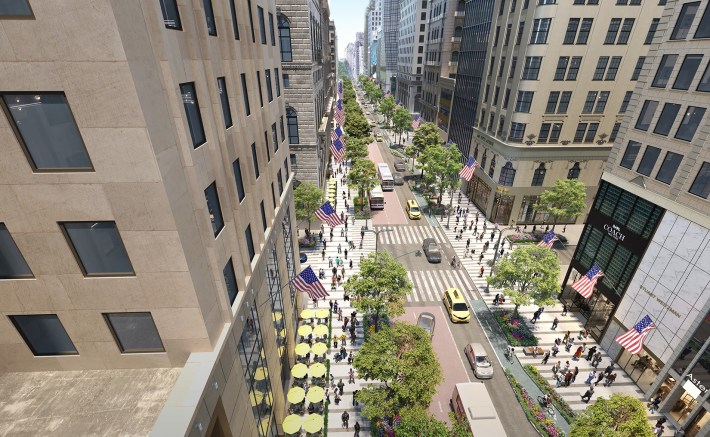
The BID-supported plan would cripple service on one of the city’s most vital transit corridors. Fifth Avenue’s buses carry tens of thousands of riders daily — essential workers, commuters, seniors and tourists alike. The plan does nothing to get cars out of their way or improve their access to curbside bus stops.
At the same time, cycling on Fifth Avenue has surged, thanks to CitiBike and the city’s growing bike network. Yet the Fifth Avenue Association plan omitted a bike lane entirely, forcing cyclists into mixed traffic — an unsafe and regressive move. Fifth Avenue connects Central Park to Midtown, offering a huge opportunity to connect New York City’s most iconic landmarks and reduce cycling conflicts — an opportunity that Mayor Adams and the Fifth Avenue Association have chosen to miss.
DOT’s 2021 design would have created a curbside-protected bike lane, giving cyclists a safe, predictable route through Midtown. This isn’t just about recreation; it’s about equity and safety. Delivery workers, commuters and visitors who bike all deserve infrastructure that acknowledges their presence and protects their lives. Neglecting to include a bike lane will endanger cyclists and pedestrians alike, as cyclists instead seek refuge on the wider sidewalks, deterring the sustainable travel the city should be encouraging.
The local community board saw this clearly. Twice now, Manhattan CB 5 has endorsed the 2021 DOT plan, supporting a design that balances buses, bikes, and pedestrians in a way that serves the public interest including making great strides in expanding space for pedestrians, in creating safer crossings and wider sidewalks. The BID’s opposition reflects a narrow, outdated view — one that equates “access” with “cars,” even though car traffic is the primary reason Fifth Avenue feels so gridlocked and unpleasant today.
For Mayor-elect Mamdani, who ran on a promise of fast and free buses and a city that serves the many rather than the privileged few, this moment is a test of principle. Implementing the DOT vision for Fifth Avenue would honor that commitment — prioritizing efficient, affordable public transit over the convenience of the ultra-wealthy and the influence of private interests.
A people-first Fifth Avenue would be more than a design change; it would be a statement that New York’s streets belong to everyone, not just those who can afford to sit in traffic. By embracing the DOT’s 2021 plan, Mayor Mamdani can show that his administration’s values extend beyond rhetoric and into the physical shape of the city itself.

